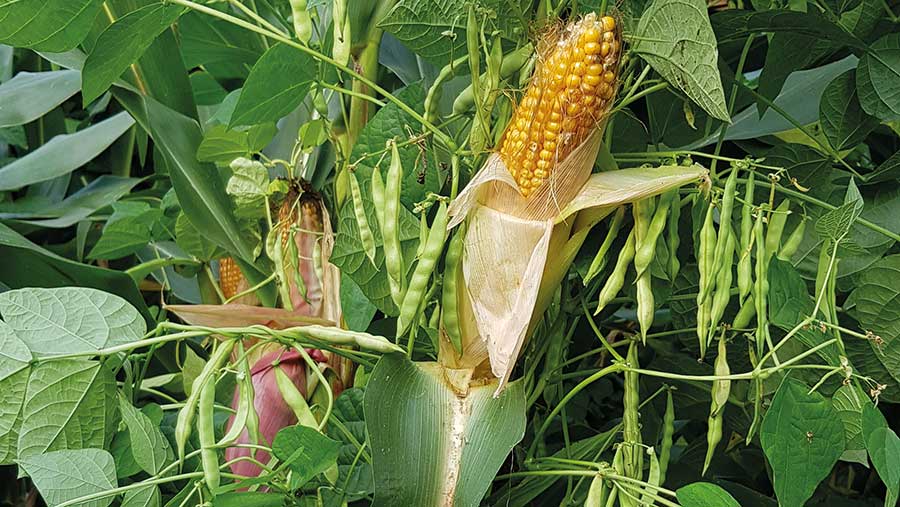3 ways to get the best results from maize crops
 © Willmar Leiser
© Willmar Leiser Making use of cover crops, adopting mechanical weed control practices, and fine-tuning the timing and depth of drilling can all help optimise maize production, according to the latest research by the agronomy and trials team at the Maize Growers Association (MGA).
See more: How growing maize with beans can improve silage quality
Speaking at the MGA’s recent annual conference, the team detailed the findings from the past two years of trials, as well as the subsequent practical advice for growers.
Cover crops
Trial location: Wells, Somerset
Aim To understand more about the best cover crop mix to grow after cereals and ahead of maize, as well as the optimum burn-off time. Species trialled included oats, rye, buckwheat, vetch and radish.
Take-home findings
- If maize is following a cereal, winter cover crops should become standard practice
- Drill cover crops early and into moisture. Clovers need to be surface-sown. A mix of oats, rye, vetch, radish and phacelia works best
- Cover crops can be grazed with flying flocks, but radishes can become “slug hotels” and this should be managed
- Burn off at the end of February to ensure a good kill. High-biomass crops will need two applications, especially if blackgrass is present
- Cover crops can be direct-drilled, with specialist kit available to help preserve soil moisture.
Mechanical weed control
Trial location: Pilton, Somerset
Aim To work out optimum management systems for weed control in maize. The trial looked at three variables:
- Solely chemical weed control
- Pre-emergence herbicide application plus two passes with an Opico inter-row hoe
- Pre- and post-emergence herbicide applications and one pass with an Opico inter-row hoe.
Take-home findings
- No statistical differences in yield of different treatments
- The plots did look weedy – even after hoeing. However, independent harvest data showed no yield differences, highlighting that mechanical weed control can be an effective management practice
Drilling date and depth
Trial location: Various sites
Aim To look at the effect of drilling dates and drilling depths, ranging from 7cm to 10cm, between April and May in 2019, 2020 and 2021.
Take-home findings
- April drilling when seed-bed conditions are correct results in an earlier harvest and higher dry matters (DM)
- Drill to moisture level in soil, but excessive deep drilling will result in lower DM and starch content, even in a good spring
- Organic maize must be drilled deep – birds can reduce plant establishment even at 7cm depths
Maize and beans
A growing interest in maize and beans led to the Maize Growers Association (MGA) running trials at its Pilton trial site to examine the effect of bicropping on quality and yield.
The results showed clear benefits in feed quality of growing maize and beans together – specifically with regards to crude protein content (see “Feed value of bicropping maize and beans compared with maize only”).
However, MGA consultant John Morgan said there is a significant challenge with weed control, as there is currently no chemistry available to protect the two crops when grown together. Groundsel was a particular challenge in the trial which Mr Morgan says hindered bean development.
Mechanical weed control is therefore essential.
Feed value of bicropping maize and beans compared with maize only |
||
|
|
Maize and beans |
Maize only |
|
Metabolisable energy (MJ/kg dry matter) |
10.9 |
10.6 |
|
Crude protein (%) |
11.20 |
8.84 |
|
Dry matter (%) |
25.9 |
24.9 |
|
Source: Maize Growers Association |
||
